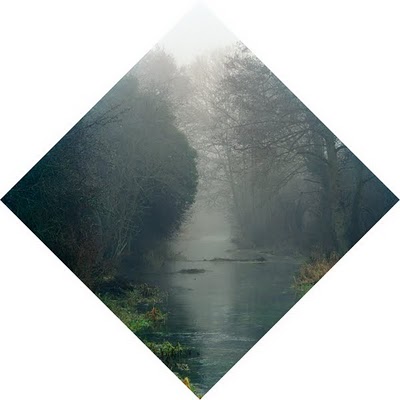David Axelbank
Monday, 31 May 2010
Work from the Lozenge Series.
“The idea of “Landscape” is dependent on the human viewpoint – it is a cultural and aesthetic construct versus the natural world. It could be argued that this moulding or shaping of space has as much to do with the framework for traditional landscape, as it has to do with semiotics.
Inspired by the use of the lozenge format in portraits by Holbein at Tate Britain, I began applying it to landscape photographs in 2006. There is an undeniably physical effect created when a scene is viewed through a diamond or rhombus shaped frame, which causes a heightened awareness of the act of seeing. Traditional landscape imagery, whether painting or drawing, is anchored by a horizontal baseline to frame the composition. This does not truly reflect how we see – rather it is an art historical convention. Our vertical line of sight, foveal vision, intersects with the extremities of our peripheral vision, horizontal perception, to create the lozenge shape.
In this series, I photographed quintessentially picturesque English landscapes, where the scale of topographical features is reinterpreted by the lozenge format. Tilting the camera 45 degrees on its horizontal-vertical axis produces this sensory shift. It is no coincidence that the most effective compositions include strong vertical and horizontal lines – trees for example, are a hugely important component of this series. Piet Mondrian explored a very similar concept with his distillation of the lines of nature in his theory of “neo-plasticism”. He aimed to create a balance between the horizontal and the vertical in a series of abstract lozenge shaped canvases – which evolved from abstraction of natural forms, most notably trees.
There is something almost primordial about this new geometry. The lozenge contradicts dominant art historical practises, yet resonates as an essential compositional form.” – David Axelbank
via Hey Hot Shot



